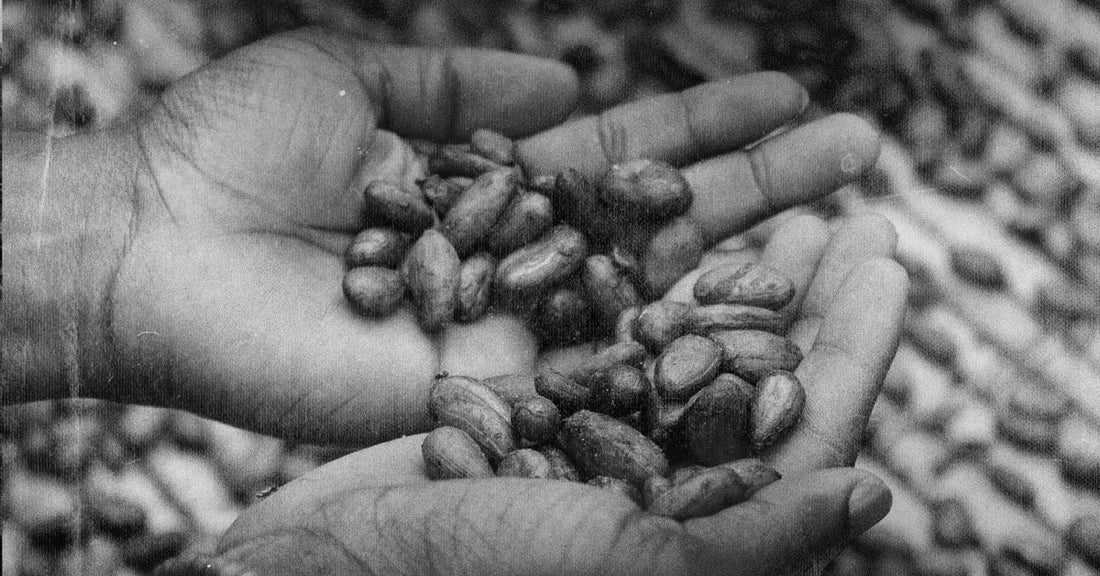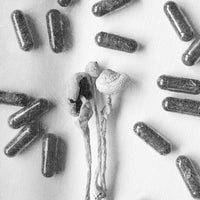Growing up in Peru, Maria del Carmen Smith had long heard of the spiritual, almost mystical, properties of cacao. In her native culture, seeds from the Theobroma cacao tree are ground and mixed with hot water to create a beverage consumed during sacred cacao ceremonies. The goal is for participants to set an intention and for the cacao to open their hearts to foster deeper connections between the self and others.
For most of her life, del Carmen Smith didn’t buy into the tradition. “I was like, no, I don’t believe in that. I don’t care,” she said.
Deep down, del Carmen Smith was curious about the benefits of cacao ceremonies, but her family’s Catholic beliefs kept cacao at arm’s length. Outside of church practices, she said, her mother discouraged secular customs. “That’s probably why I believed terrible things would happen” if she attended cacao ceremonies, del Carmen Smith, now 44, said.
It wasn’t until early 2020—then married with children and living in Liverpool—that del Carmen Smith learned about the powers of cacao firsthand. She’d been attending yoga and shamanic classes and, through that community, met a woman who sold cacao. Finally ready to experience it herself, she purchased some and was provided with instructions on how to self-facilitate a ceremony at home.
One night, after she’d put the kids to bed, del Carmen Smith chopped her cacao and prepared her drink, being mindful to connect with the plant and the process. She set an intention—what she hoped to get out of the ceremony. Steam rising from the mug, she inhaled deeply and then took a sip. It wasn’t sweet like hot chocolate. It was bitter and earthy. Over the course of 20 minutes or so, del Carmen Smith fell into a relaxing meditation. Then she did some painting and took a bath.
“I was very calm and I was feeling very, very happy at the same time,” she said. “It was very warm and like your grandmother gave you a hug.”
Since then, she’s performed this ritual nearly every day—sometimes with others, sometimes alone—and now she even facilitates one-on-one cacao ceremonies for clients.
Cacao’s Deep Roots
Del Carmen Smith is part of a long lineage of people who have experienced a heart-warming sensation when consuming cacao. Cacao has held a sacred place within Latin America for millenia. The Olmec, Aztec and Mayan people utilized cacao, a plant first cultivated in South America over 5,000 years ago, in beverages, within specific rituals, during milestone events and as a luxury. Cacao was an integral part of the creation myths in Aztec and Mayan cultures and historical records have shown cacao to have been used in baptisms, in marriage ceremonies, and at religious festivals, symbolizing blood itself.
Indigenous communities across the region continue the tradition today, holding cacao ceremonies for participants to open their hearts and connect to their consciousness. Tonatiuh Montes Buenrostro, 30, was first introduced to cacao ceremonies when he was 13. Growing up in Bacalar, Mexico, he was intrigued whenever family and community members participated in these ceremonies, and he soon began attending. The goal, Buenrostro said, was for each individual to tap into their consciousness and look inward. Longer ceremonies, ones that begin at sunset and end with sunrise, are particularly memorable.
“You’re able to go a little bit deeper into consciousness and different dimensions and you start seeing things as energy and not so much as individuals,” Buenrostro told Trends w/ Benefits through a translator.
In his teens, Buenrostro had aspirations of becoming a chef, but looking back on his experiences with cacao—and how much he had grown during cacao ceremonies—he changed course. Now a shaman facilitating cacao ceremonies, Buenrostro has witnessed countless spiritual awakenings, which he describes as the moment that he and another person can communicate without words. “When a person ingests cacao, our bodies produce chemicals like serotonin that make you feel really relaxed,” Buenrostro said. “You are able to access a deeper state of awareness and consciousness.”
Changes of Heart
Cacao’s benefits go beyond the interpersonal and spiritual. Cacao beans are rich in flavanols, which have been shown to improve thinking skills, lower blood pressure and improve blood flow to the brain and heart. Cacao also contains iron and tryptophan, an amino acid the body uses to create serotonin, hence the good-mood sensation. “It’s full of antioxidants, and it's full of properties that can potentially lower blood pressure in a great majority of people,” said Annette Borja, a yoga and meditation teacher who is planning to facilitate cacao ceremonies soon.
Borja, 45, learned about cacao ceremonies while on a family trip to Ecuador in 2013, and delved into the practice once she returned home to the mountains outside of Denver, Colorado. Borja, who also works in veterinary medicine, has always had a deep reverence for nature, plant medicine and scientific research. Whenever an herb or natural remedy catches her eye, she’ll devour scientific articles about it. But the way cacao ceremonies allowed her to tap into emotions from the past, often to the point of tears, she couldn’t describe with science. Cacao was a way for her to heal physically and spiritually.
“Because we forget that we're part of this Earth and this Earth is part of us, it has more to do with that than I think any type of intellectual type of research,” she said. “This is a natural process and it's more of a reconnection and grounding yourself with this plant.”
Cacao’s heart-opening properties are difficult for del Carmen Smith to describe, too. Back in Peru, her family life was toxic, she said, but during cacao ceremonies, she found love for herself she hadn’t previously felt and a deeper unconditional love for her husband and children. “Coming from that background and feeling you’re no good in some ways,” she said, “and suddenly this experience you’re having is showing you no: Inside there's a lot of love. I have more compassion for me.”
For Buenrostro, these heart-opening effects don’t come on their own—they require work. “Cacao might be the opening door,” he says. In his ceremonies, Buenrostro urges participants to focus on relationships or how the mind influences matters of the heart in order to reap the greatest benefit.
“If you're able to forgive or you’re able to let go,” he said, “you're able to heal.”
Allie Volpe is a journalist based in Philadelphia. You can follow her on Twitter.
Header image by Etty Fidele via Unsplash.
Read more: Cultivating a Kindness Practice with Houston Kraft
Read more: Turmeric: Sri Lanka's Golden Spice
Read more: The History and Origins of Ashwagandha
Read more: Mumbai's Chai of Choice




